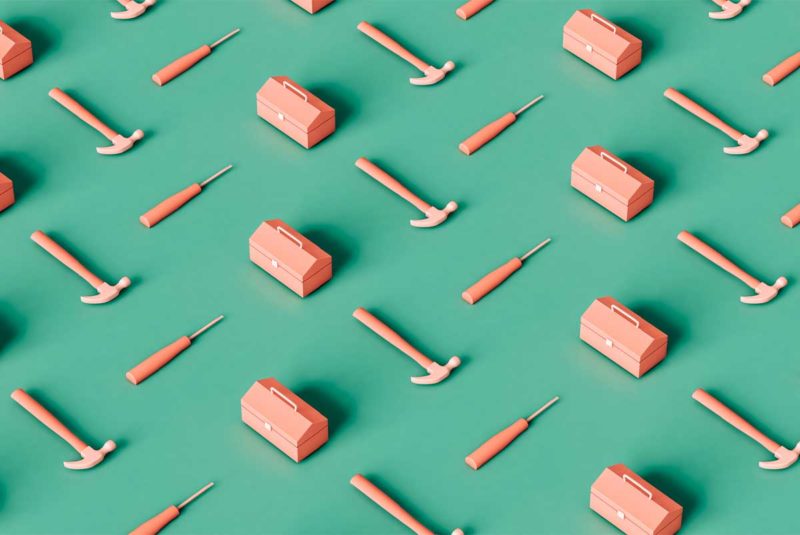You don’t always need a credit card to build credit. It’s one of the easiest ways – but it isn’t the only way.
One of the keys to building credit is to pay your bills on time. This is how you can establish a solid credit history even if you don’t have a credit card. And there are lots of bills and expenses you can use to improve your credit.
Keep reading, and we’ll show you 9 ways you can establish the kind of credit history that impresses lenders and will help you get great rates on loans – and, yes – credit cards.
1. Credit Builder Loans
Credit builder loans are installment loans designed to help build your credit. If your lender is reporting nothing but on-time payments to the credit bureaus, your payment history will help boost your credit scores.
Unlike traditional loans where you get the money you’re borrowing upfront, the lender deposits the loan amount into an interest-bearing account. Your monthly loan payments essentially act as security deposits. Once you pay off the loan, you get access to the money.
You can get a credit builder loan from credit unions or community banks. You can also look into online lenders, but some online lenders may not report the loan’s credit activity to all three major credit bureaus (Experian™, TransUnion® and Equifax®).
2. Personal Loans
Personal loans are typically unsecured consumer loans (hint: no collateral needed). Their possibilities are endless! They can help finance large purchases or cover unexpected expenses.
Unsecured personal loans typically have higher interest rates than secured loans, like mortgages or car loans, but usually have lower interest rates than credit cards. You can get a personal loan from a bank, a credit union or an online lender.
Bigger loans don’t necessarily improve your credit any more than smaller loans. When it comes to building credit, what matters most is your payment history and how much of the loan you’ve paid off.
If you’re carrying a lot of debt, you can also use a personal loan for debt consolidation, which could help build your credit and save you hundreds or thousands of dollars in interest over time.
3. Federal and Private Student Loans
Student loan debt impacts over 43 million Americans, costing over $1 trillion in total.[1] It’s probably safe to say that student loan debt is a fairly common debt many Americans are dealing with. While many borrowers would (rightly) describe it as an unshakeable debt burden, some borrowers have figured out a way to use it to their advantage to improve their credit scores.
You can use your student loans to boost your credit scores even if your loans are in deferment or forbearance. (FYI: Both student loan debt-relief options reduce or pause payments. If your loan is in deferment, interest won’t accrue. If your loan is in forbearance, interest will continue to accrue.)
Loans that are in deferment or forbearance don’t affect your credit scores any differently than loans that aren’t modified by a debt-relief program.
If you pay off your student loans and your closed accounts are in good standing, that positive payment history could hang around on your credit reports for up to 10 years.
4. Personal Lines of Credit
Personal lines of credit land midway between loans and credit cards. It’s a type of revolving credit account that functions much like a credit card. You can request a certain amount you’d like to borrow. If you’re approved for a line of credit, you’ll enter what’s known as a draw period. During the draw period, you can withdraw money up to your credit limit. The interest rates on personal lines of credit are typically lower than what you’d be charged on a credit card.
Making monthly payments will restore your credit limit, allowing you to borrow from the line again and again until the draw period ends. Making your payments on time will help you build credit and boost your credit scores.
When you apply for a line of credit, the lender will set your credit limit based on your credit reports, credit scores, income and your outstanding debts. You typically need pretty good credit scores to qualify for a personal credit line.
5. Rent Payments
Scoring models including rent payments in their credit score calculations is a relatively new thing. While credit bureaus have always included renting information like property info, evictions or broken leases in their credit reports (if the information was provided to them), no scoring model incorporated the data. That is, until FICO® 9 and VantageScore® 3 and 4 came along, which are new models of how scores are calculated.
However, not all landlords report your rental payment history to credit bureaus. Sometimes it’s only included when you’ve missed several payments and you’re reported to collections, which isn’t a good thing. So check your credit reports or talk to your landlord and ask if they’re reporting your information. If not, you may want to take the opportunity to ask your landlord to start reporting your rental payments.
While it’s unclear just how large of an impact on-time rental payments will have on your scores, think of it this way – every little bit helps.
But keep in mind, lenders will only see this impact if they use the above-mentioned scoring models, and probably any future iterations of them. Other models may not reflect any changes caused by your rent payments.
6. Add Monthly Bills and Other Financial Data to Your Credit File
You can add monthly bills and financial information, like utilities, subscriptions and bank records, to your credit reports to help build your credit. UltraFICO® and Experian Boost™ are scoring models that incorporate more data than what’s typically included for the purpose of boosting your credit scores.
UltraFICO® (created by FICO®, Experian™ and Finicity) is a scoring model geared towards people who have lower-range credit scores or limited credit histories. It lets you add personal bank account information (like your checking, savings and money market accounts) to your Experian™ credit report in the hopes of boosting your FICO® scores.
The Experian Boost™ scoring model will connect to your bank account and look at your history of transactions for qualifying on-time payments. It’ll look at internet, cable or phone payments, streaming subscription payments and utility payments and include them in your credit report in the hopes of boosting your FICO® scores. Negative payment history isn’t included, so there’s no risk of damaging your scores. This is a free service anyone can use, but you’ll have to provide your bank login details, which could pose a potential security risk.
Keep in mind that if Experian Boost™ improves your credit profile, lenders will only see the effect if they look at your Experian™ credit report, or the credit scores are drawn from Experian™ data.
7. Mortgages
Mortgages are one of the most popular installment loans and the most common type of secured loans.
While mortgages focus on real estate, they operate the same way personal loans do: You pay back what you borrowed at regular intervals for a set amount of time. Making on-time mortgage payments will contribute to a healthy credit history and reflect favorably on your credit scores.
The mortgage terms you’re offered are determined by a few different factors, including your credit scores, your ability to repay the loan and how much you want to borrow.
However, you shouldn’t apply for a mortgage just to build your credit. If your goal is to build your credit, you should consider credit builder loans.
8. Car Loans
Because most auto loan lenders report your loan payments to the credit bureaus, getting a car loan can help you build your credit if you make your payments on time. Auto loans are secured loans (hint: the car acts as the security), which makes them just slightly easier to qualify for than an unsecured loan, especially if your credit scores are on the low end. And if that’s the case, lower credit scores usually mean higher interest rates.
Look for a low-to-medium interest rate to help keep your payments lower and affordable. If you get a car loan with a higher interest rate, you may be able to refinance the loan later.
9. Authorized Users
Did you know you can use credit cards without having to apply for one? Most primary cardholders can request to add authorized users to their accounts. If a primary cardholder adds you as an authorized user, you’ll get your own credit card, and in some cases, you’ll even gain access to a few card benefits.
Before you ask to be added as an authorized user, make sure the primary account holder doesn’t have any delinquencies on their account and that they make a habit of paying their bills on time.
On the other hand, you should be honest with the primary cardholder (who’s usually someone you trust and trusts you) about your spending habits. Because, spoiler alert, the primary cardholder is responsible for paying back any charges they make and you make. You can always pay for your share of monthly charges, but, ultimately, the primary account holder is legally responsible for any activity made by the authorized user.
If you become an authorized user, in some cases, the primary account’s reported transaction history may be applied to your credit history. In other cases, only the transactions that appear after you’ve been added as an authorized user will appear on your credit reports. It all depends on the credit card issuer’s authorized user policy.
Keys To Successfully Building Credit
The most important strategy for building credit is to make sure you’re paying all of your loans and lines of credit on time. This means making at least the minimum payment or the required monthly payment on time until your debts are repaid.
Missing a payment or making late payments will hurt your scores and reflect negatively on your payment history. Negative information, like delinquent accounts, can stay on your credit reports for up to 7 years.
You also need to be aware of other factors that play a role in calculating your credit scores:
- Credit utilization: Credit utilization is the amount of credit you’ve used compared to your spending limits for revolving credit accounts, like credit cards – and that includes being an authorized user on a credit card. Lines of credit and installment loans, such as student loans, personal loans and credit builder loans, aren’t factored into your overall credit utilization. Having low credit utilization is good for your credit scores. In some cases, consolidating credit card debt with a personal loan would be a savvy money move that could lower your credit utilization and potentially increase your credit scores.
- Credit mix: A mix of credit accounts, like credit cards and loans, can contribute positively to your credit history and credit scores. Credit scoring models will typically award more points if there are different kinds of credit accounts attached to your name.
- Hard inquiries: When you apply for some form of credit, such as a loan or credit card, a lender will perform a hard inquiry on your credit reports. A hard inquiry may bring your credit scores down temporarily, so try not to apply for a lot of credit products in a short period.
Why You Might Consider Getting a Credit Card
The above options are all viable ways to build credit, but the simplest way to build credit remains the humble credit card. Building credit with credit cards works much like the options we’ve offered. If you’re paying off loans, making your minimum payments on time and spending responsibly, honestly, you’re well-prepared to step into the world of credit cards.
Credit cards are a good way to build up a positive credit history, and some cards offer rewards you can claim while you’re practicing fiscal responsibility.
And, if you have limited or no credit, there are cards for your situation. Just keep in mind that these cards typically feature no rewards and have very few benefits. Their primary use is to establish credit and act as a stepping stone to better cards.
Secured credit cards are a good way to build or rebuild credit. They require a one-time security deposit that typically establishes your credit limit. You get your deposit back once you’ve established (or reestablished) your credit, and you’re ready to apply for more impressive and rewarding cards.
No Credit Card? No Problem
If you thought it was impossible, now you know: You don’t need a credit card to build credit. Choose from the options we’ve laid out and see which one(s) best fits your situation and your finances.And no matter which option you choose, make sure you’re making your payments on time. A payment history of on-time payments will be the biggest factor in boosting your credit scores.
The Short Version
- You don’t always need a credit card to build credit. It’s one of the easiest ways – but it isn’t the only way
- You can add monthly bills and financial information, like utilities, subscriptions and bank records, to your credit reports to help build your credit
- The most important strategy for building credit is to make sure you’re paying all of your loans and lines of credit on time
Education Data Initiative. “Student Loan Debt Statistics.” Retrieved April 2022 from https://educationdata.org/student-loan-debt-statistics




